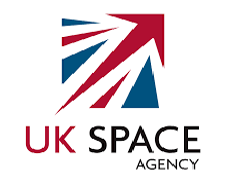METEOR is a three year project funded by the UK Space Agency to develop innovative application of Earth Observation (EO) technologies to improve understanding of exposure with a specific focus on the countries of Nepal and Tanzania. The METEOR project consortium is a composed of eight organizations crossing four continents and with expertise spanning from humanitarian aid, to remote sensing, from disaster risk reduction to policy advice. The escalating impacts of natural hazards are caused mostly by increasing exposure of populations and assets. A major challenge when making Disaster Risk Management (DRM) decisions is poor understanding of the distribution and character of exposure in ODA countries. Exposure needs to be mapped, monitored and modelled by Governments, NGOs, affected communities and businesses, seeking to bolster resilience and growth. Robust, quantitative methods are required to justify resilience decisions and risk mitigation. Projects have aimed to map exposure using Earth Observation (EO) using a range of approaches, though the application of these in DRM has been greatly limited by the fact that many have been poorly calibrated, for instance by being based solely upon readily available data, or were designed only for a particular setting. METEOR takes a step-change in the application of EO exposure data by developing and delivering rigorous and open routines (protocols) and standards to allow quantitative assessment of exposure, with explicit uncertainties. These protocols and standards will be developed for broad application to ODA countries and will be tested and validated in two contexts (Nepal and Tanzania) to assure they are fit-for-purpose. The process of building capacity and co-delivering new consistent data will promote welfare and economic development in these countries, and demonstrate the applicability of the techniques elsewhere. METEOR will deliver country-wide openly-available exposure data for the 48 least developed ODA countries. Better-informed DRM decisions that meet the demands of international drivers (e.g. SDGs, Sendai Framework) will be underpinned by our national-scale data.

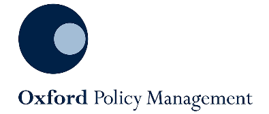

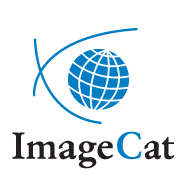
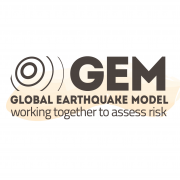

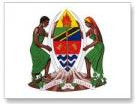


The Key objectives of the project are:
- Delivery and use of open-source national-scale exposure datasets for multi-hazard analysis by Nepalese, Tanzanian and global stakeholders;
- Uptake of protocols to develop critical exposure information from EO data;
- Uptake of sustainable business model for exposure application in DRM by stakeholders;
- Exposure data integrated into national DRM policy and planning (where possible in a three-year project);
- Improved capacity for end users to utilise and understand hazard-exposure data;
- Creation of a network of stakeholders better placed to act as leaders of DRM in their geographic regions.
The METEOR project is composed of eight work packages.
WP1 (led by BGS) covers project management, meetings with UKSA and quarterly reporting. We will have bi-weekly telecons as needed and Advisory Board meetings each year (two in Yr 1 when it will be important to agree the direction of travel) to provide feedback on project deliverables and project direction. This will ensure cover across the primary stakeholders of the project. Board meetings will be attended by WP leads including international partners. As part of the project administration we have confirmed that Nepal and Tanzania are not in active conflict and project partners are not receiving funding from other sources to achieve the same outputs. However, our work is aligned (and building on) other work such as the World Bank Global Challenge Fund. All partners have confirmed that they comply with
- match funding rules
- the large-scale ca ex investment rules and have anti-bribery and anti-corruptions policies in place. Items i) and ii) will be noted in the subcontract flow-down clauses.
- Teaming agreements will be in place within 60 days of issuing the grant. User Requirement Documents will be drawn up with DMD and NSET and signed prior to delivery of the first milestone. The detail in the URDs will be flexible during the project lifespan to respond to changing requirements and circumstances.
WP2 (led by OPM) will cover M&E including structured interviews with stakeholder throughout the project to gauge progress and impact. We will design the monitoring system, which the project will use by jointly developing detailed log frame indicators with project partners, agreeing responsibilities for collection of monitoring data. The Impact Evaluation will use a theory of change approach to explore whether the project activities are leading to the desired outcomes and impacts. The insights gained from the monitoring data and the evaluations will be fed back into the programme to allow learning and adaptive programming.
WP3 (led by ImageCat) focuses on EO-based data for exposure development, methods of segmenting/classifying building patterns for stratified sampling of building characteristics and quantifying and documenting uncertainty. It will establish a “Science” or language of exposure and protocols/standards for exposure development in a comprehensive manner never explored to include a multi-hazard taxonomy of structural and functional characteristics of the built environment and future population projections- for multi-tiered general building stock, transportation, essential facilities, and key commercial and industrial assets.
WP4 (led by HOT) addresses HOT-sourced integration to expand the existing OSM crowdsourcing framework to account for the expanded taxonomy. Consistent and objective exposure data will be collected in Kathmandu and Dar es Salaam to help validate and calibrate the EO-based exposure protocols and outputs.
WP5 (led by GEM) will look at vulnerability and uncertainty of utilising and integrating data from various sources to investigate how the inherent assumptions, limitations, scale, and accuracy of exposure / hazard data, as well as decisions in the hazard and exposure data development process lead to modelled uncertainty, including spatial distribution of buildings, population projection, and statistical inference (mapping schemes) of structural/occupancy/replacement cost estimates.
WP6 (led by BGS) will consider multiple hazard impacts on exposure and how they may be addressed in DRM by a range of stakeholders. Despite recent scientific advancements in the characterisation of the built environment and development of hazard models, economic and human losses due to natural disasters continue to increase. We will assess hazard footprints for earthquakes, floods, landslides and volcanic activity and address the potential multi-hazard interaction and impacts.
WP7 is our knowledge-sharing component (led by GEM) to disseminate to the wider space and the development sectors. This dissemination will be performed through dedicated web-portals and through the use of the Challenge Fund open databases thus ensuring that the outcomes of this project will be available to the DRM community in the long term.
WP8 encompasses sustainability and capacity-building (led by ImageCat with Task Leadership by DMD and NSET). The WP includes launch of the databases for Nepal and Tanzania working with in-country experts including GIS specialists, disaster risk managers, and structural engineers. Sustainability requires ownership by all stakeholders therefore the capacity-building will be co-led by international partners in Tanzania (DMD) and Nepal (NSET) to support growth in their own capability to assess hazard exposure in DRM. A sustainable business model will be drafted and the insurance market will be approached for early adopters interested in our products.
The milestone list below includes deliverables for selected intermediate steps in the project. Our milestones will enable us to assure that each of the sub-contractors is fully engaged in the project and that the deliverables are consistent with the overall goals of growing capacity in Nepal and Tanzania, and launching a transformative platform for our protocols and open source exposure data. In Yr1 we will focus on drafting taxonomies, protocols, research, and data discovery, Yr2 will be Pilot testing the products from the first year and developing supplemental applications and protocols. In Yr3 the final databases will be launched on the platform, and all protocols and research will be finalized and published and the sustainability programme launched.

